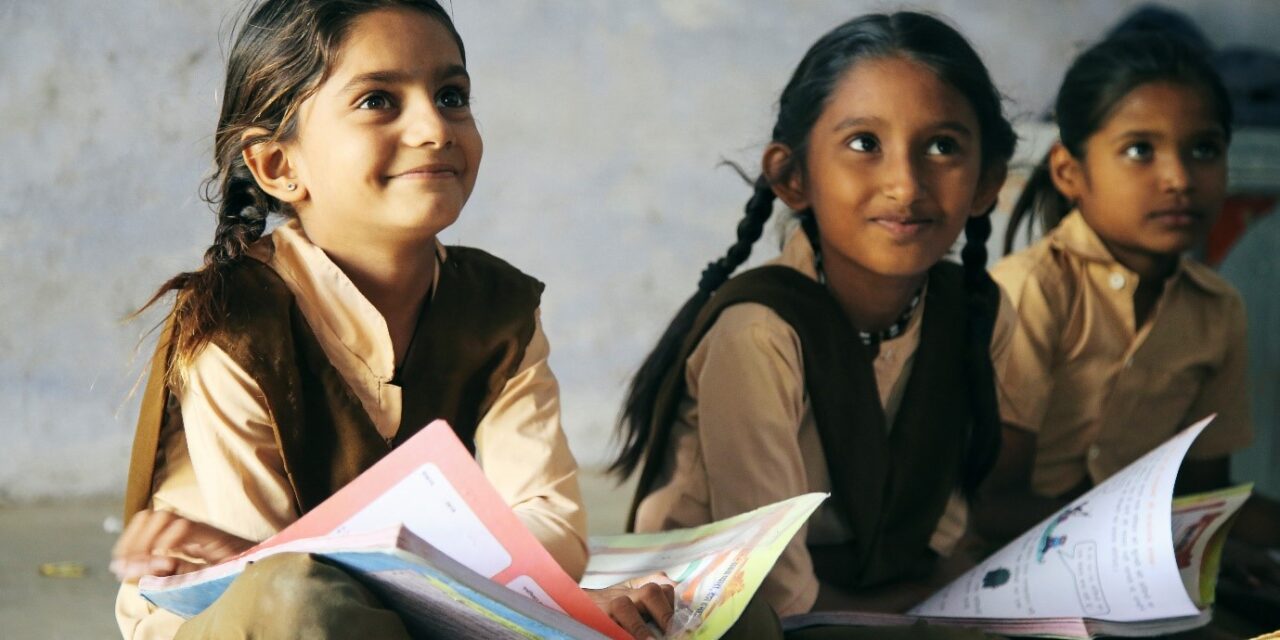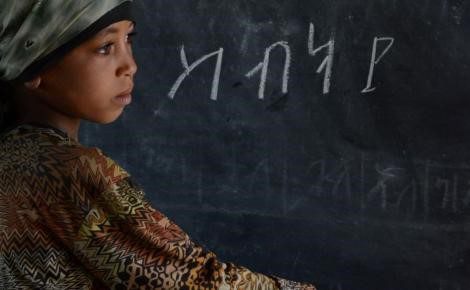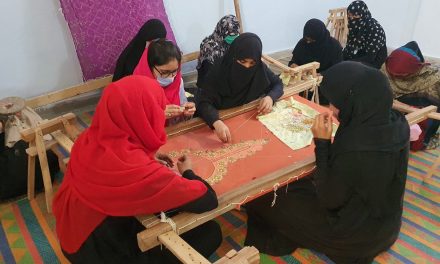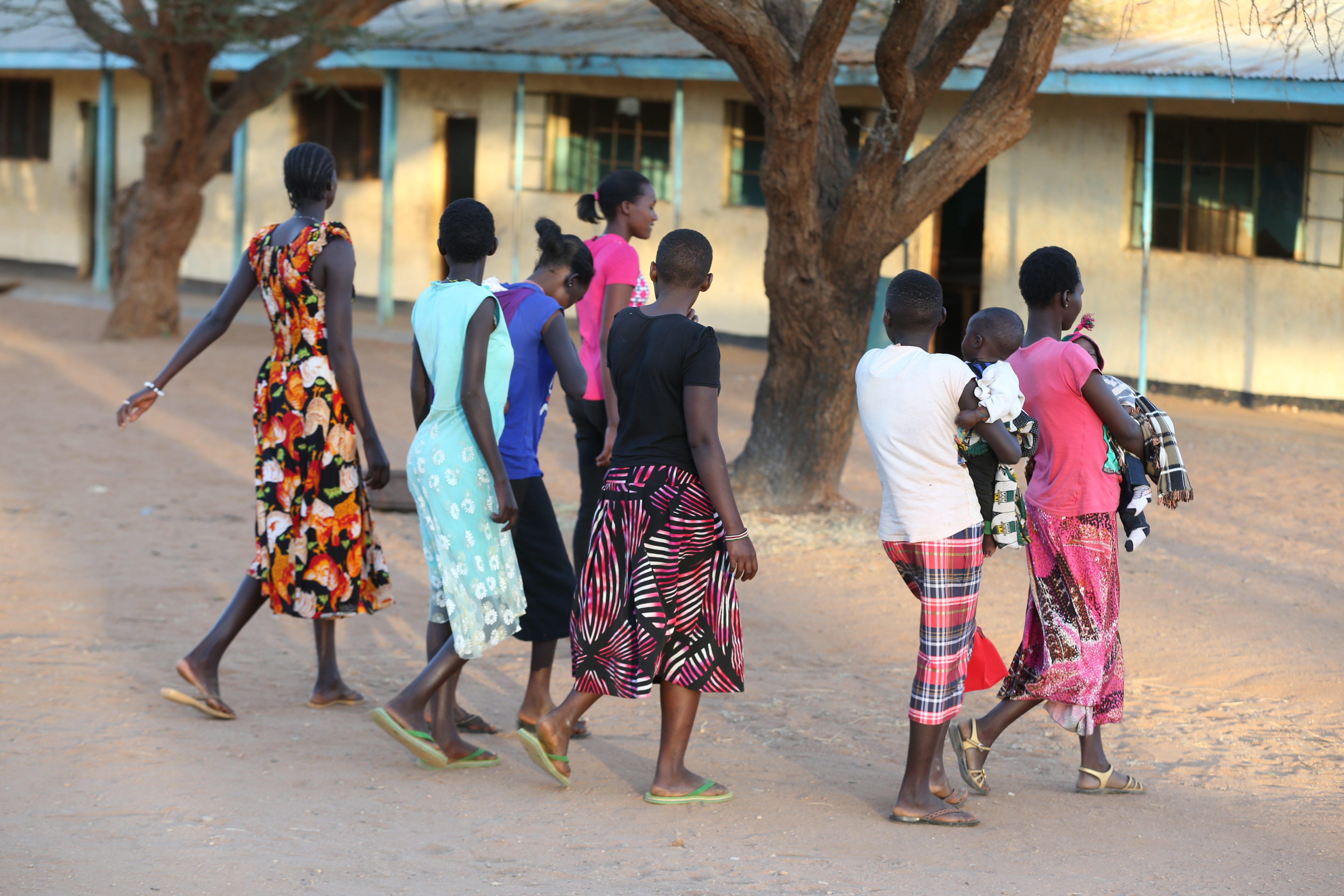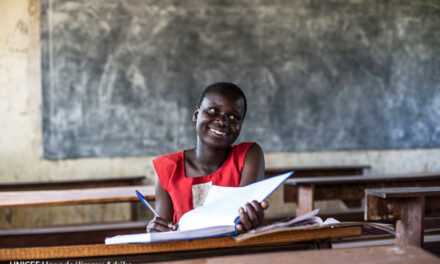This article was written by Safeena Husain, Founder and Executive Director of the NGO Educate Girls. It is adapted from a key note speech at the World Innovation Summit for Education (WISE) held 24 June 2020.
As India went into lockdown back in March as a result of the Coronavirus pandemic, 321 million children across every State were sent home from school and have not set foot in a classroom for nearly five months now. In the first 11 days of being at home, 92,000 calls were made to the country’s children SOS helpline. Our children are in crisis, and as you read this, you may well be multi-tasking yourself and working while home schooling your children. We have a huge responsibility the world over to put considerable resources and creativity into how to make this up to our children – How to offer relief now, plan a supportive and inclusive recovery and then reimagine education. And, by designing a new way of educating our children that benefits those most in need and those already left behind, we will reimagine education that will benefit all. My advice is focused on India, but I am sure there is a lot that will be relevant for education systems across lower- and middle-income economies across the world.
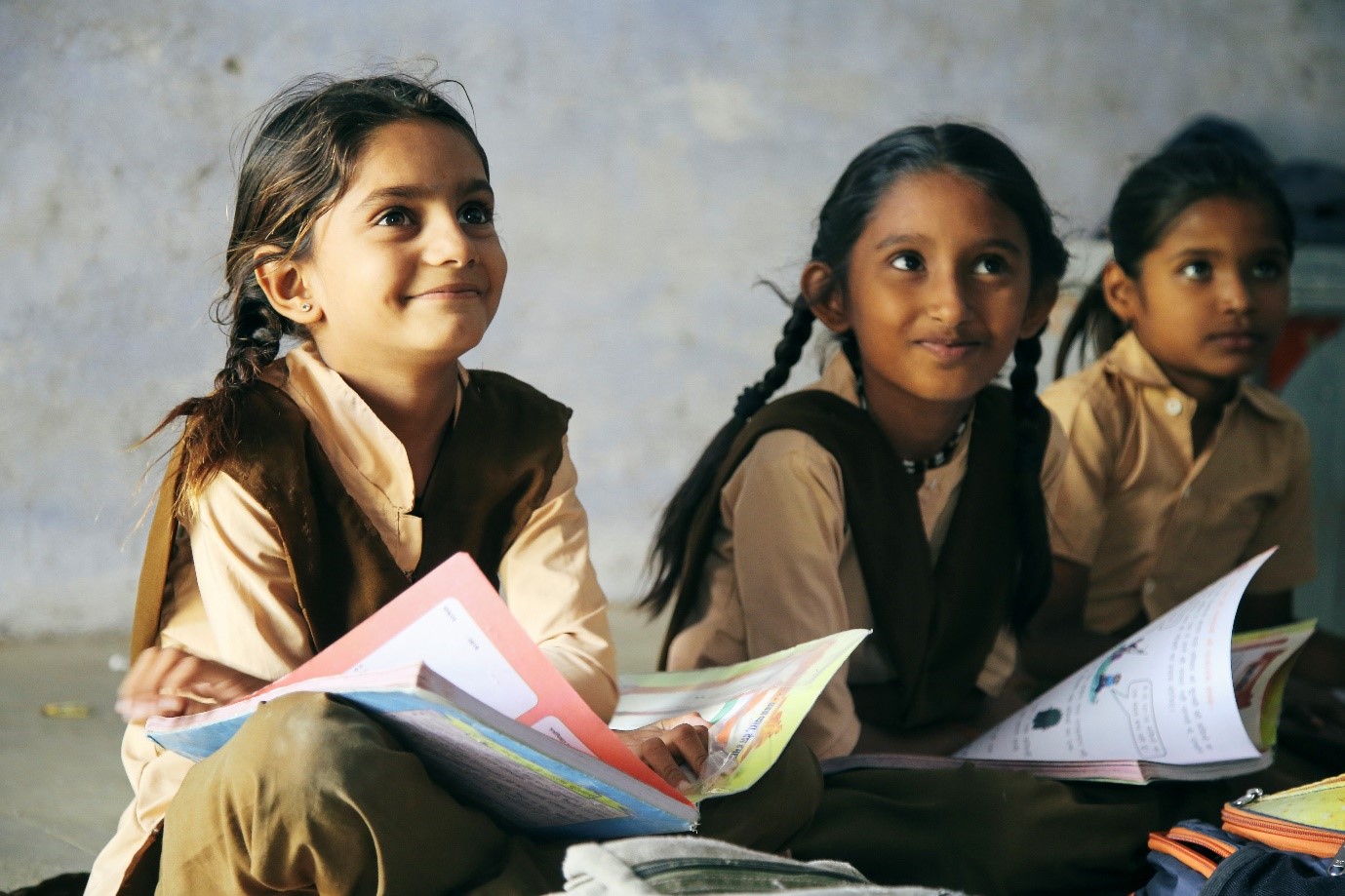 Greater equity, access, inclusion and innovation
Greater equity, access, inclusion and innovation
There is still no clarity on what a return to school might look like and when that might happen, but I would like to propose that as we try to rebuild the school experience for our children, we do it in a way that allows for greater equity, access, inclusion and innovation. It’s important to keep the most vulnerable – girls – at the centre of any new design. Only then, can we bring real transformation in the way education systems address the needs of the generations to come.
During its 12-year history, Educate Girls, the organisation I founded in 2007, has seen poverty and patriarchy continue as the two key barriers to girls’ education in India. And now, COVID-19 has made both these challenges much worse.
The economic shock due to job losses and reverse migration has plunged families back into poverty. A recent UN report suggests nearly 35 million people who had risen out of poverty will be pushed back below the extreme poverty line this year alone, and before the end of 2030, 130 million may be living in extreme poverty. The achievement of the SDGs is under threat.
Alongside the economic factors that are crippling communities, there is an emerging regression to all the old gendered roles in households, as families are cooped up, anxieties are high and children are not in school. We are seeing domestic duties falling straight back onto the shoulders of our young girls.
- We are seeing 17 times increase in domestic abuse cases;
- Distress calls to the National Commission for Women helpline doubled.
With patriarchy back at play and girls’ vulnerabilities shooting back up, school will become a distant memory for so many and re-enrolment will become near impossible.
Take the example of West Africa after the Ebola pandemic, where girls’ enrolment levels failed to reach pre-Ebola levels. UNESCO reported that in Liberia, the number of out-of-school girls at primary level tripled from 8 to 21%. Similar to West Africa where teen pregnancies and child marriage increased, we too are seeing more girls being forced to marry in India.
Story from India
I will tell you a short story that illustrates my point.
When the pandemic hit, Gita, was on the verge of completing her schooling. She was already a child bride, but allowed to stay with her parents and compete her education. Distance learning for girls like Gita is impossible as they are rarely allowed to access a mobile phone. It is deemed inappropriate. When Gita took her father’s phone to text a girlfriend, her father and brother thought she was dishonouring her family, talking to a boy. Her brother slapped her and in anger and despair, she consumed poison and was rushed to a hospital. Gita was lucky to survive, but she was packed off to live with her husband and in-laws as soon as she got home. No sooner had this happened, three other girls from the same village met the same fate. Their childhood gone, their education halted, their futures diminished.
Before COVID-19 hit, we were acutely aware of the global learning crisis. Yet despite huge strides, we still had around 130 million girls out of school. With so many countries still in lockdown, we can only estimate the impact that the COVID crisis will have. As Gita’s story illustrates, one thing we know for sure is that the crisis has widened inequalities and hit hardest those already struggling, ignored, excluded or lagging behind…
Three R’s – Relief, Recovery and Reimagining
As we reflect on this and consider the opportunity to build back better, I am proposing that we focus on the 3 R’s – Relief, Recovery and Reimagining education systems…all through a gender lens, putting girls at the centre of our planning.
Relief:
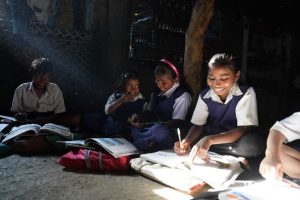 As an education-focused NGO, our priority is always the children. But in these unprecedented times, if we as civil society don’t have an immediate response to help alleviate hunger and the risk of deepening poverty, our children will suffer and will bear the weight of the crisis. For this reason, we have pivoted to support the government with food distribution, awareness building and creating awareness on social security schemes, in some of the poorest and most marginalised villages. And it isn’t a surprise that these are the villages with the highest concentration of out-of-school-children, especially girls. At Educate Girls, we have leveraged our existing community and government relationships, data and last mile reach to distribute food to close to 100,000 households.
As an education-focused NGO, our priority is always the children. But in these unprecedented times, if we as civil society don’t have an immediate response to help alleviate hunger and the risk of deepening poverty, our children will suffer and will bear the weight of the crisis. For this reason, we have pivoted to support the government with food distribution, awareness building and creating awareness on social security schemes, in some of the poorest and most marginalised villages. And it isn’t a surprise that these are the villages with the highest concentration of out-of-school-children, especially girls. At Educate Girls, we have leveraged our existing community and government relationships, data and last mile reach to distribute food to close to 100,000 households.
Recovery:
The pandemic has hit education systems on many levels, and the road to recovery will be long. We have to accept that all the gains that we have made in enrolment, retention and learning may potentially be undone.
I feel, as schools prepare to reopen, we have to prioritize in the same order: enrolment, retention and learning and address the challenges of nutrition, safety and emotional well-being, before we tackle the inevitable impact on learning.
- Hunger: Even in normal times our women and girls are the last to eat at home and eat what is left over. With poverty worsening, they are highest at risk of extreme hunger. To address this, schools need to double down and extend the midday meal programmes or take home rations, possibly extending them to include breakfast. They will also have to plan extra food resources for rural areas where migrant children have returned. Tracking and monitoring of this scheme will now be more critical than ever.
- Safety & Access: We must create mass awareness on the need for children, particularly young girls to be back in school and activating community mobilisation to make this possible, and then sustainable. We have to leverage our communities to create the demand for girls’ education. At Educate Girls, we have created an army of over 13,000 gender champions at the village level to do just that. Today, during the lockdown, we are reaching out to them and parents via WhatsApp, SMS and phone calls. Yes, universal access was close to being achieved as we closed the MDGs in 2015, but I am afraid we have to realise that access will be a huge problem again. In order to address access issues, we need an expanded role of school administration; School Management Committees to engage more on attendance; increased capacity for girls in residential schools and tribal hostels; and perhaps even cash transfers to attract and retain girls in school. Girls like Gita need to be back in school and complete their education.
- Mental Wellbeing: At home, children are feeling significant emotional stress and anxiety after lockdown. Just think of Gita’s situation. Now we need to see psychosocial support initiatives as an absolute priority as schools reopen. We need to reduce stress and the pressures put on our children to complete the “course”, help them reengage with the full school experience and overcome the trauma of the pandemic.
- Learning: And finally to learning. We will have to find a balance between online and offline learning modules or ‘blended learning’. Substantial resources will have to go into remedial curriculums and increased investments in bridge camps to support those who have fallen furthest behind or at risk of dropping out.
Reimagining education systems:
We need to reimagine an education system that works for all. We know that when we design for those struggling most, we are fair to everyone and everyone benefits. All means all – is how the new GEM Report 2020 launched recently describes it.
And we have the evidence that this approach works. When we ran the first ever pilot for a new way of funding education through an Impact Bond a couple of years ago, we designed a new teaching and learning approach that prioritised the children who were lagging furthest behind. We broke down lessons into micro competencies and saw almost a whole additional year of learning achieved in just a few months. We achieved staggering learning gains for so many children, as a result of designing for the children starting from the lowest base. Anything we do now to reimagine education has to start from this position.
We will have to tackle patriarchy and reimagine an education system where text books and teaching materials are without gender bias and damaging traditional stereotypes and we have to look afresh at what ‘quality’ of education means.
Technology will play a critical role. But, school closures are shining a light on the debilitating urban rural and gender digital divide, preventing any form of distance learning from reaching so many of the rural and poor children, especially girls who need it most. In many cases, ‘distance learning’ doesn’t go the necessary distance to reach those who perhaps need it most. And as we see in Gita’s story, even with a phone and internet connectivity in her household, patriarchy can still prevent mobile access for so many girls.
Finally, convergence will be one of the biggest imperatives for a reimagined education system. Education ministries have to collaborate far more proactively with other sectors such as health, social welfare, youth, tribal affairs and even the ministry of telecommunications, to address these multifaceted issues and support students. Reimagining will involve reform and this has to be cross-sectoral.
As we reimagine education we need an intentional gender lens. Because being gender neutral is essentially being gender blind. The World Economic Forum suggested in a recent report that it is going to take 99.5 years for the gender gap to be closed. We definitely cannot wait that long! And as we navigate the Coronavirus crisis, let’s use this time wisely and invest in and expand on what we know works, and totally reimagine what we know is holding us back – as a nation and a global community.

